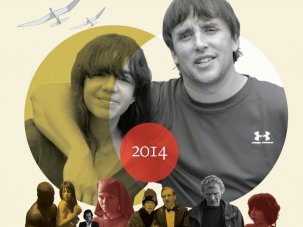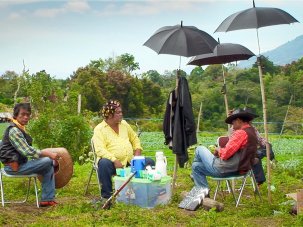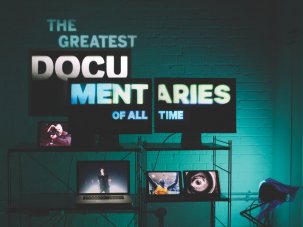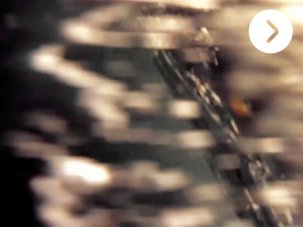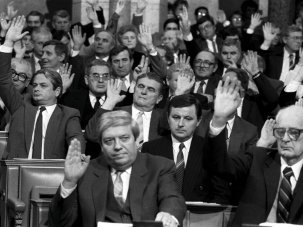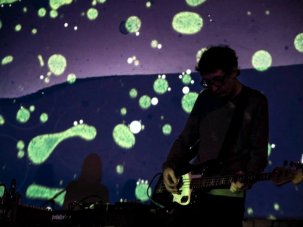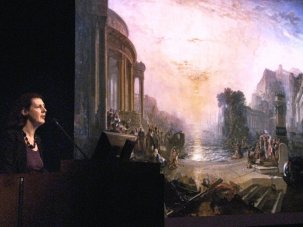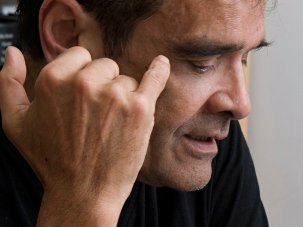2014 was a year in which the lines between documentary and fiction were further blurred; when Richard Brody could write in the New Yorker, of Darius Clark Monroe’s ambitious Evolution of a Criminal, “what difference would it make?” if the movie was fact or fiction, and few would bat an eye.
“The verifiability of journalism is its crucial and indispensable social function, and is precisely the limit that keeps it from becoming art,” Brody goes on to assert. “The art of nonfiction, the essay, is intimate, subjective, and interpretive.” At least in certain circles, nonfiction film has been thoroughly disentangled from journalism, and can now be safely cast as Art, free to play by the rules of fiction. This is good, right?
Godard said that “every film is a documentary of its actors” and Richard Linklater’s brilliant Boyhood, Sight & Sound’s best film of 2014, takes this truism and pushes it further: all movies are documents of their own creation.
Boyhood is a tree trunk, marking time with each new scene, and its scattered yet vocal detractors seemed to have missed its essential formal gambit: this is as much a chronicle of Linklater’s growth as it is Ellar Coltrane’s or Patricia Arquette’s (or their characters’). The film is an observational portrait of the attempt to make a film over 12 years, as personal and cultural styles are in constant evolution. The brilliance here is that every bit of the growth is visible onscreen (warts and all), making it a true document rather than simply a killer concept. Perhaps this is one of the reasons the documentary-centric True/False Film Fest made it their closing night film.
Still, although Boyhood is one of my favourite films of the year, it isn’t on my list of the best in 2014 cinematic nonfiction. In this moment of porous boundaries, what makes something ‘nonfiction’ matters even more; the unbreakable tether to reality present in actual actualities is what continues to make nonfiction my favourite art form. I was happy to see Boyhood at True/False, spurring this discussion forward. I also agree with Brody: facts and art are at best in dialectic. His defence of documentary is welcome. As master practitioner of the blurred arts Joshua Oppenheimer put it in a talk at CPH:DOX, “journalism is there to tell us what we need to know. Art is there to show us what we already know, but don’t discuss.”
Now let me pause for a moment. When you scroll down you’ll see a few decidedly fiction films listed. To me, though, these works’ connection to the real world is unbreakable in a way that defines how they function as cinematic experiences.
It’s a bit arbitrary, I’ll admit, but my point remains: reality matters. And comprehension of the way reality can be shaped matters. Nonfiction film is defined thusly because there is an essential tension that exists between the chaotic, random, serendipitous force of reality and the impulses and decisions of the person who makes it their goal to record and edit that mess into what we call a film. The duty of the documentary maker is to not forget she is creating a movie: make decisions! Be bold! Express, don’t just show! Find emotional truth! Still it remains crucial that we stay true to the actual moments captured. The blurring of fiction/nonfiction boundaries should be used to create deeper clarity, rather than muddiness.
In a year when Eric Garner was choked to death by an NYPD officer on video or Ferguson, Missouri street protests could be ‘experienced’ via livestream, it’s become clear that understanding the real and how it exists in tension with the image of the real is as crucial as ever. Garner and Michael Brown, the young black man who was shot multiple times and killed by Ferguson officer Darren Wilson, became nonfiction characters in US and world media, the shifting perceptions of their all-too-short lives by multiple, wild-eyed parties (protestors, police, the public, cop killers) leading straight to calamity.
Is it too much to suggest that a deeper understanding of what Oppenheimer calls “the unacknowledged scripts” in nonfiction might help us better fathom how the images of these men in the media were nonfiction performances that could be exploited? Maybe this is grand overstatement, but perhaps the ability to better read the way documentary films actually work (the aforementioned tension between what is captured and how it gets manipulated and constructed) could help increase media literacy more broadly? Maybe this is a new way for us to “make the world a better place”, as the old idealistic adage goes.
Documentary film is gloriously confined to the harsh limits of reality. The beauty is in watching artists bang against the wall and shake loose experiences that matter. This is my third time writing this report from the front lines of cinematic nonfiction and I can say that I’m as excited about the form as ever.
I started writing about this stuff because I had a chip on my shoulder about what was getting made and what I saw as a lack of sophistication by critics in how documentaries were being discussed. And there remains a certain tendency towards the info-dump in documentary and a widespread fetishising of ‘respectable’ norms of quality among filmmakers and critics alike. Still my list of the best of the year could’ve reached 50 movies; there’s no need to talk about whether or not we’re living in a golden age of nonfiction. Let’s just watch and debate and punch the sky with happiness that so much work is worth celebrating.
2014 saw the passing of icons Robert Drew, Harun Farocki, Ed Pincus, Robert Gardner, Michael Glawogger and William Greaves, among others. But we also saw one of our very best, Laura Poitras, literally change the way we see the world through her work with Edward Snowden, as documented in the much-celebrated Citizenfour.
Meanwhile Tabitha Jackson, the new head of the traditionally issue-oriented Documentary Film Program at the Sundance Institute, made waves by declaring emphatically, “The lingua franca of nonfiction filmmaking should be the language of cinema and not the language of grant applications.” Her speech at DOC NYC was music to the ears of fans of adventurous filmmaking everywhere. That a major funder/gatekeeper like the Sundance Institute could get behind cinematic nonfiction was a sign that things are inching in the right direction.
Just as the best films have a certain ‘life’ to them – an organic, vital quality best seen in great nonfiction – our documentary culture is thriving and dynamic and very much alive. So let’s raise our glass to another year of exhilarating, free-spirited, knotty, expressive, weird and rattling reality-based cinema.
Notes:
1. I happen to have been in the privileged position of having a few films on the festival circuit this year, so my list reflects what I saw, not necessarily what was released or can be easily seen by everyone. Some of these will be more readily available next year, some actually premiered in 2013. This list very much represents my own year of viewing.
2. Though I obviously won’t discuss my own film, I do want to mention that I had the chance to help complete three of my very favorite documentaries of the year: Amanda Rose Wilder’s Approaching the Elephant, Jessica Oreck’s The Vanquishing of the Witch Baba Yaga and Craig Butta’s If You Take This. They won’t be included below, but, because this list is primarily a way for me to gather what most excited me (and I hope will excite you) in one place, I list them here.
3. Maybe my favourite new-to-me film I saw this year was Alberto Grifi and Massimo Sarchielli’s Anna from 1972, which I was able to catch at Dennis Lim and Rachael Rakes’ new Art of the Real series at the Film Society of Lincoln Center in New York. With festivals like this and True/False, Hot Docs, CPH:DOX, IDFA and others continuing to show such great new and older work, there’s a lot to be thrilled about.
4. Truly, though, nothing else can beat this one-minute piece of cinematic purity, so it gets its own line.
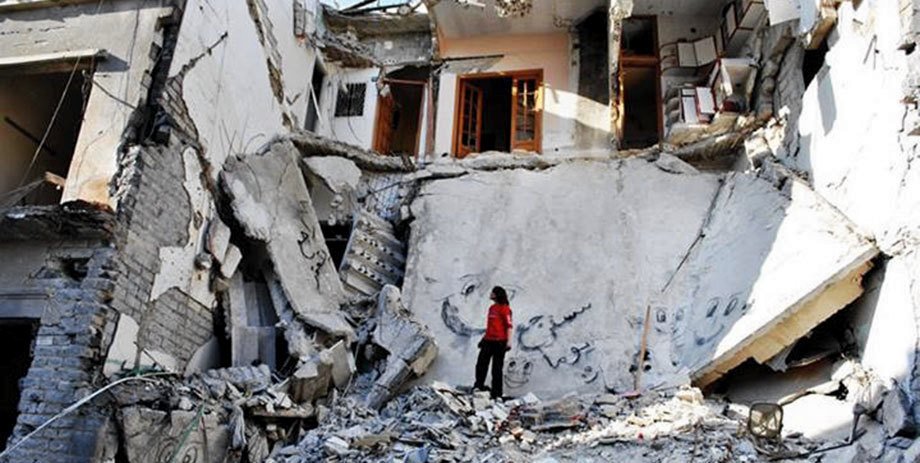
Silvered Water, Syria Self-Portrait (Ma'a al-Fidda, 2014)
25. Silvered Water, Syria Self-Portrait
(Ma’a al-Fidda) Ossama Mohammed and Wiam Simav Bedirxan, France/Syria
A heartbreaking, kaleidoscopic portrait of war and the psychologies that are erected in the face of atrocity, Silvered Water, Syria Self-Portrait is a collaborative poem unlike anything you’ve ever seen. Besides being built using the captured images of “1,001 Syrians”, this view of a nation ripped apart by civil war focuses on the unlikely and illuminating partnership between the exiled filmmaker Mohammed and Simav, who was a school teacher in Homs, recording first-person accounts of the siege.
Simav is the film’s heart and heroic soul; her courage is palpable and eye opening. But it’s Mohammed’s impressionistic, self-referential structure that allows the film’s central theme: in a world where comfortable Paris (where the filmmaker was exiled) and bombed-out, desperate Syria can somehow co-exist, there is extreme difficulty in making a movie about war and irreconcilable loss. This struggle and need to create amidst the ruins and self-doubt defines us as human beings.

Art and Craft (2014)
24. Art and Craft
Sam Cullman, Jennifer Grausman, Mark Becker, USA
The closer you get to one of master art forger Mark Landis’s faked paintings, the stranger the idea of celebrating individual creation seems. Meanwhile, the closer you get to Landis, the more you learn over the course of the film, the odder and more distinctive he appears. One of the great documentary characters, Landis evokes Robert Crumb or maybe Edith and Edie, but truly can be compared to no one we’ve seen in mainstream nonfiction.
And the team of Cullman, Grausman and Becker take the perhaps overripe subject of forgery and the slippery nature of truth and refuse to redo Orson Welles’s inimitable F for Fake. Where the film could be needlessly tricky, we’re given immense heart. Landis, in the end, remains a delightfully weird enigma, full of life and strange pursuits, and his work is likely still being mistaken as ‘authentic’.

Storm Children, Book One (Mga Anak ng Unos, 2014)
23. Storm Children, Book One
(Mga Anak ng Unos) Lav Diaz, Philippines
Storm Children, Book One (of a rumoured 16) is a haunting, elegiac report by one of our greatest living filmmakers from a village in the Philippines that was devastated by what has been called the most powerful typhoon on record.
Black-and-white, bleak and wordless for its first 70 minutes, Diaz’s profoundly melancholic view of children scavenging in the wreckage still has the faint sense of hope against the stark landscape of local apocalypse. Kids sing the soundtrack from Frozen and gleefully dive off shipwrecked tankers, in between shifts of cleaning, digging and literally picking up the broken pieces of their lives.
Late in the film, an interview reveals what the kids are actually doing and why they’re so alone, which Diaz gives his viewers after almost two hours of just allowing us the space and time to watch, experience and think. This is radical reportage and proof of the enduring ability of captured images to open up our perceptual pathways.
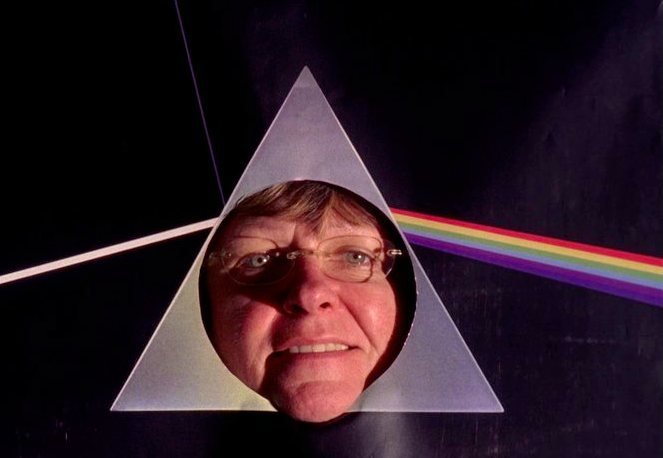
Dusty Stacks of Mom: the Poster Project (2014)
22. Dusty Stacks of Mom: the Poster Project
Jodie Mack, USA
Jodie Mack’s mom had a poster/novelty store. So the experimental filmmaker made a stop-motion, 16mm musical film about it, singing her whimsically, infectiously nostalgic lyrics to the music from Pink Floyd’s The Dark Side of the Moon. Naturally.
No film in recent memory has had more fun with challenging our standard ideas of documentary and autobiography. The key is Mack’s performance, which is full of pathos and disarming wit. Those lucky enough to have seen her perform Dusty Stacks live can attest to its immediate, obsessive and giddily playful power.
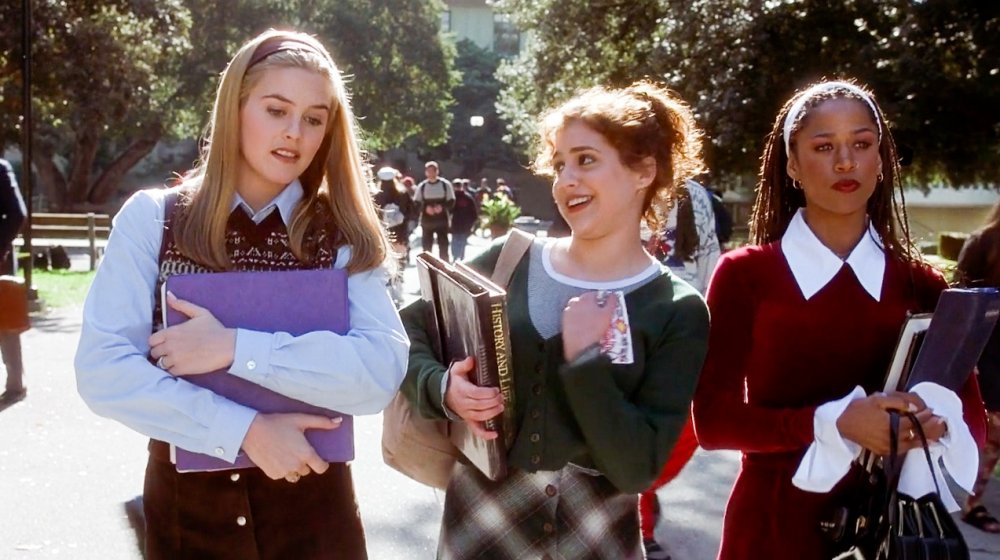
Clueless (1995)
21. Beyond Clueless
Charlie Lyne, UK
Lyne (responsible for one of the best movie sites ever) is young and very smart so he will likely go on to make even cleverer films than his debut feature Beyond Clueless, which uses images from teen movies from the 90s and early aughts to explore and define the persistently intriguing, elusive and sexy topic of the teenager.
Like a junior Los Angles Plays Itself, the film pushes considerably past supercut clichés to deliver a work that’s more narratively engaging than many of the films being celebrated/mocked/employed. There’s potent expression buried in ‘bad’ movies and Lyne delivers back to us all the latent psycho-dramatic material he can wring out of films like Bubble Boy, The Craft, Eurotrip and She’s All That.
The selections are perfect, but this is no clip show, this is “an utterly asinine and amateur-ish feature of half-baked film criticism.” No wait, someone else thought that. I think it’s a fun, bright, surprisingly profound piece of cinematic storytelling.

(La bataille de Solférino, 2013)
20. Age of Panic
(La bataille de Solférino) Justine Triet, France
Triet chose to set her scrappy domestic comedy/drama against the backdrop of real-world events and, as in Petra Costa and Lea Glob’s soon-to-come Olmo and the Seagull (which premiered at CPH:DOX and will likely make the rounds in 2015), the relationship between the fictional and nonfictional extends and expands a thematic interest in the relationship between private and public identities.
Laetitia Dosch stars as Laetitia, a reporter and mother who’s called in to cover the final vote between French incumbent Nicolas Sarkozy and insurgent socialist candidate Francois Hollande and must balance the needs of her children, her lover, her ex-husband and the demands of her job at a crucial historical moment for her nation.
Much of the film was shot on the streets during political rallies and features real interviews with demonstrators on both sides of the political aisle. These scenes are notable, especially in how the documentary footage of the emotional reaction to Hollande’s election informs the intimate, fictional narrative of feminine struggle to maintain identity in the face of overpowering maleness. In Age of Panic, the real and the staged dance in dialectic, and it’s thrilling to watch.

On the Run Tour: Beyonce and Jay Z (2014)
19. On the Run Tour: Beyonce and Jay Z (Shorts Version)
Jonas Akerlund, USA
The most famous pop-music couple on Earth went on tour and played some remarkable music (and some terrible music), turned their marriage into a multi-channel, arena-rock, French-New-Wave and strip club-inspired spectacle that grandiosely mythologised every single ounce of their family life and effectively took over the world. Ho hum, I know.
Beyonce and Jay Z’s On the Run tour seemed like the biggest, most garishly exhibitionist musical soap opera/psychodrama since Pink Floyd The Wall until HBO and arty director Jonas Akerland showed up to turn the overwrought into something like pure kinetic pop poetry. Especially in the originally released series of shorts, Akerland’s (and Jay and Bey’s) mix of big-time mainstream pop iconography, duelling seductive egos, Fellini-esque colour and stagecraft and uncontained montage burst off the screen and into those deep recesses in my brain where sex and dance are queen and king. Pop spectacle for the constantly visual generation.
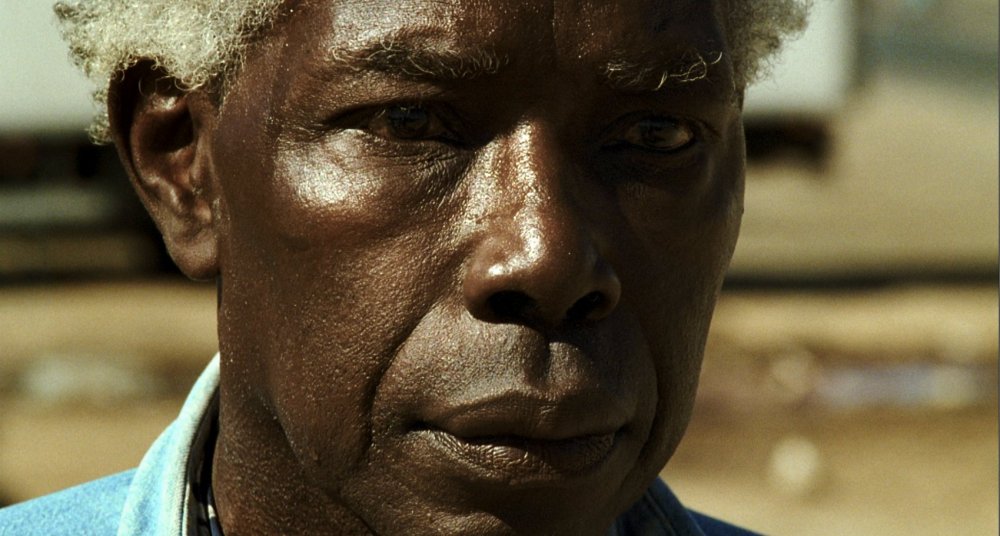
A Thousand Suns (Mille soleils, 2013)
18. A Thousand Suns
(Mille soleils) Mati Diop, France
In 1973, Diop’s uncle Djibril Diop Mambéty directed the classic Touki-Bouki, which remains one of the great films of African cinema. Thirty years later, Diop follows the film’s star, Magaye Niang, as he ambles from a screening of the movie back to his farm in the countryside of Senegal.
Within this simple journey, using elements of loosely structured fiction and vibrant observation, Diop and Niang find startling poetry and the emotionally moving, rugged sense of a life lived. A Thousand Suns melds past and present, fiction and nonfiction, metaphor and portraiture in exhilarating ways.
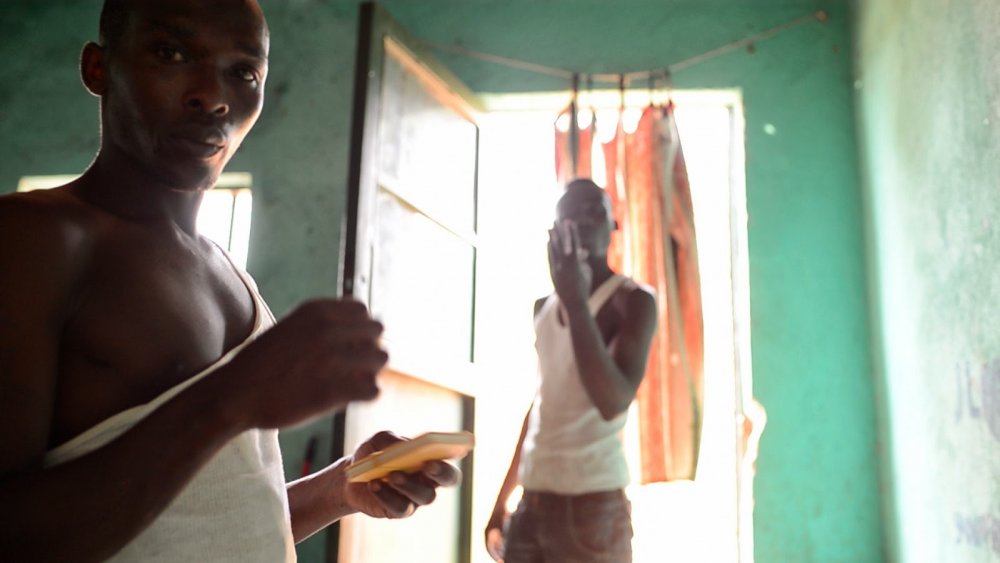
Life After Death (2014)
17. Life After Death
Joe Callander, USA
Joe Callander made one of the great, most hilarious and most scathingly satirical shorts ever in 2013’s Tina Delivers a Goat. Or did he?
For his debut feature, Callander returned to the same group that Tina was working for while delivering the goat to make a film that vibrates with deep sincerity and charm, despite (or because of) its utterly idiosyncratic rhythms and way of seeing. In Q&As at the film’s premiere at True/False, Callander bristled at the idea that his portrait of two young, charismatic Rwandans and the evangelical Christian family that helps take care of them was ‘satire’. To add another layer, that same family paid for the film to be made, a fact briefly noted in the film.
It all somehow works, though, and knowing the complexity of the situation actually enhances the incredibly layered and particular experience Callander creates. Life After Death is at turns funny, weird and heartbreaking, clear-eyed and empathetic in its portrait of Christian philanthropy and welcome in its honest depiction of young African men. Call it post-satire or whatever – what matters is that Callander is one of the most unique new filmmaking voices in America.

Waiting for August (2014)
16. Waiting for August
Teodora Ana Mihai, Belgium/Romania
The winner of the main prize at Hot Docs, Teodora Ana Mihai’s debut feature is a stunningly intimate piece of crafted observation that never overplays its lyricism and ends up being emotional and subtly provocative in unexpected ways.
It centres on a 15-year-old Romanian girl named Georgiana, who must assume responsibility for herself and her six siblings while their mother is away working in Italy. Gorgeously shot, perfectly constructed and comfortable like a good friend, the film is a portrait of a family, the experience of childhood and working-class realities that never relies on cliché and speaks to the possibilities of finding the universal in the radically specific.
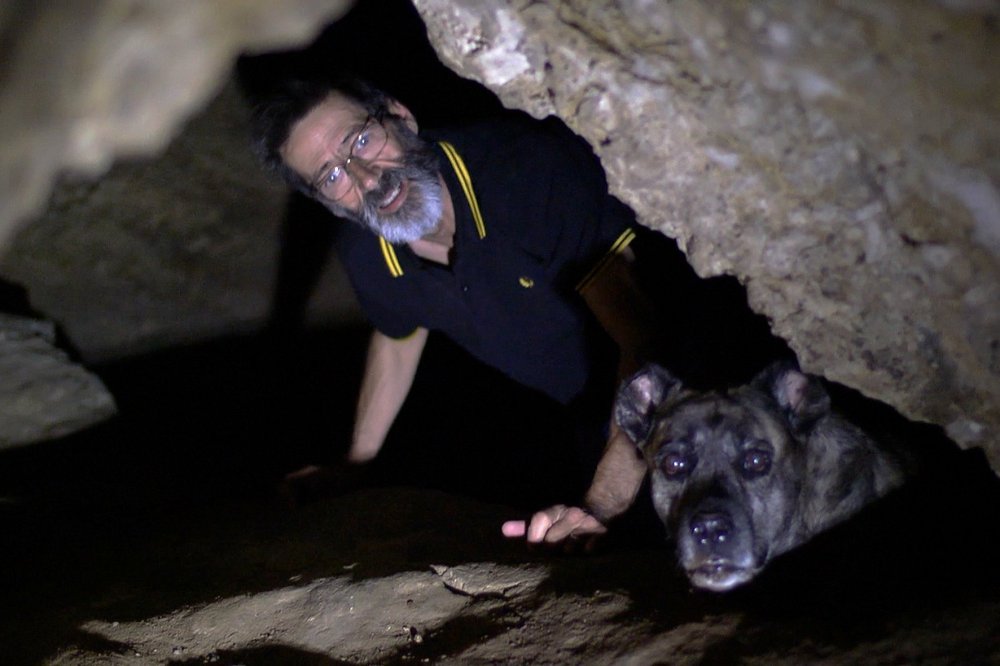
What Now? Remind Me (2013)
15. What Now? Remind Me
(E Agora? Lembra-me) Joaquim Pinto, Portugal
Pinto’s inventive, delicate, deeply moving What Now? Remind Me is part diary, part essay film and part survivor story. It’s a movie rich with lucidity, beautifully honest and potent observations and a stunning fragility that makes us hyperaware of the brittleness of the human body and the resilience of the mind and soul.
Long suffering from HIV and Hepatitis C, Pinto turns the camera on himself and his art-world friends to discuss his treatments, his loves and his past glories, revealing a mighty life that is slowly fading away. This is heroic intimacy, an unflinching, melancholic bravery only matched by the sheer joy of cinematic invention. It also features the most handsome dogs of the year, with apologies to Jean-Luc Godard’s Goodbye to Language canines.
14. What was Documentary? An Elegy for Robert Gardner
Kevin Lee, USA/UK
Kevin Lee, USA
+ Nothing
LJ Frezza, USA
:: kogonada, USA
In his survey of the best video essays of 2014, practitioner and critic Kevin Lee acknowledges the explosion in popularity of the form and the multiple modes in which pieces are made (including in academia) and makes a strong case for this being the year of the video essay. But are these primarily works of film criticism or filmmaking?
I’m not sure I have the answer, but the way in which video essayists re-contextualise found images to create new meanings is as cinematic as any other form of montage. Would anyone suggest Los Angles Plays Itself isn’t cinema? These pieces may be shorter and made for online consumption, but they’re no less interested in expanding the way we see the world. The best video essays, like Lee’s Transformers: The Premake and Elegy for Robert Gardner (made for S&S) open our perceptions by way of critique and questioning. The latter may be my favourite elucidation for what I perceive as the fundamental nature of nonfiction art.
Meanwhile works like LJ Frezza’s Nothing and the oeuvre of video-essay genius ::kogonada (including the lovely Hands of Bresson) make clear that the line between nonfiction film and video essay is at best blurry and the best work should simply be celebrated as cinema.
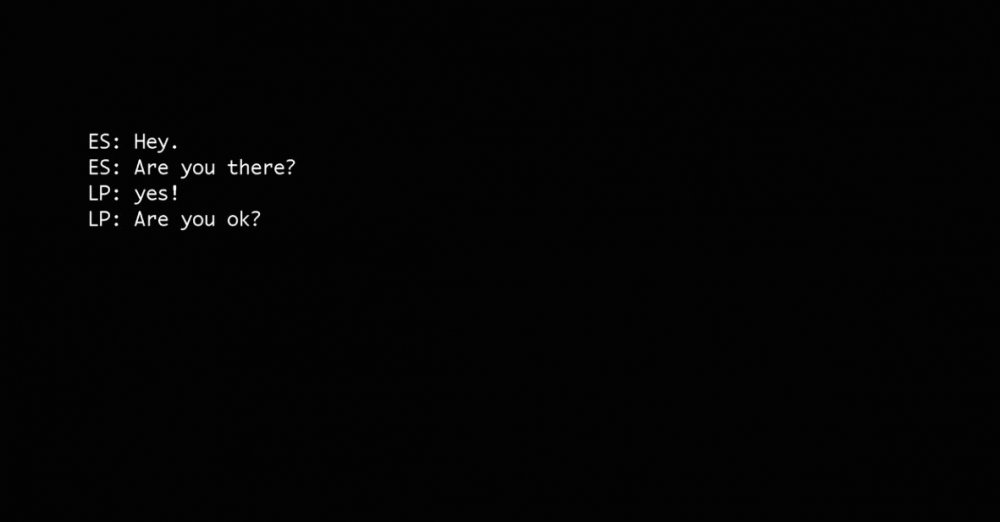
Citizenfour (2014)
13. Citizenfour
Laura Poitras, UK/Germany/USA/South Africa
Laura Poitras is a great filmmaker who makes layered, dense, powerful nonfiction cinema (for example, two of my very favourite documentaries: The Oath and My Country, My Country) and I don’t have to think Citizenfour rises to her previous levels of artistry to agree with its many admirers that it’s a crucial work that should be seen by all.
The best parts of the film are the you-are-there look at the very moments Edward Snowden revealed all in a Hong Kong hotel room to Glenn Greenwald, Poitras and another journalist, which play like a tense cross between a home movie, a dispassionate journalistic recording and a taut political thriller. The surrounding scenes only hint at the film Poitras was likely on her way to making before she was contacted by Snowden, and I hope we get to see her more broadly tackle the complex issues that have arisen over the revelations that our governments are spying on us at unprecedented levels. For now, let’s marvel at a film that probably wouldn’t exist without the courage, conviction and abilities of one of our finest living filmmakers.
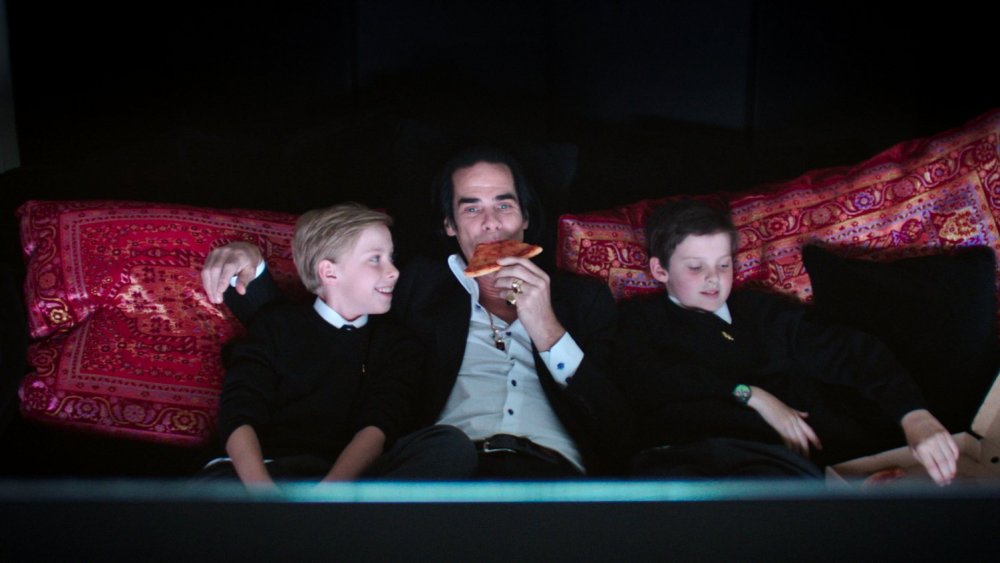
20,000 Days on Earth (2014)
12. 20,000 Days on Earth
Iain Forsyth, Jane Pollard, UK
Forsyth and Pollard’s portrait of rock icon Nick Cave is one of those films that simply shouldn’t work. These first-time documentarians have made their names as visual artists, which might explain why they approached their subject with such aesthetic abandon. There’s a bracing, uproarious rule-breaking quality to every decision they make, including how they use Cave’s persona, his words and every image created to accompany his particular brand of philosophical ranting.
The resulting film is a pop-art near-masterpiece as risk-taking, anthemic, ironic and emotionally involving as Cave himself at his very best.

Buffalo Juggalos (2014)
11. Buffalo Juggalos
Scott Cummings, USA
Not unlike Khalik Allah’s surprising Field Niggas [Vimeo], Cummings’ 30-minute portrait of Juggalos in Buffalo, NY is a collaboration between subjects and filmmaker that creates empathy and understanding by giving a widely-misunderstood subculture the stage to present themselves as they want to be seen. Cummings found a form that projects complex psychologies directly from screen to viewer, guided by the ‘just try and judge me’ laser-beam looks coming from these face-painted ‘weirdos’ as they stare into the camera.
If that sounds even slightly dry and academic, just try to see the film, which has become a hit on the festival circuit because it’s one of the most hilarious, aesthetically nuanced and straight-up explosive debuts in recent memory.
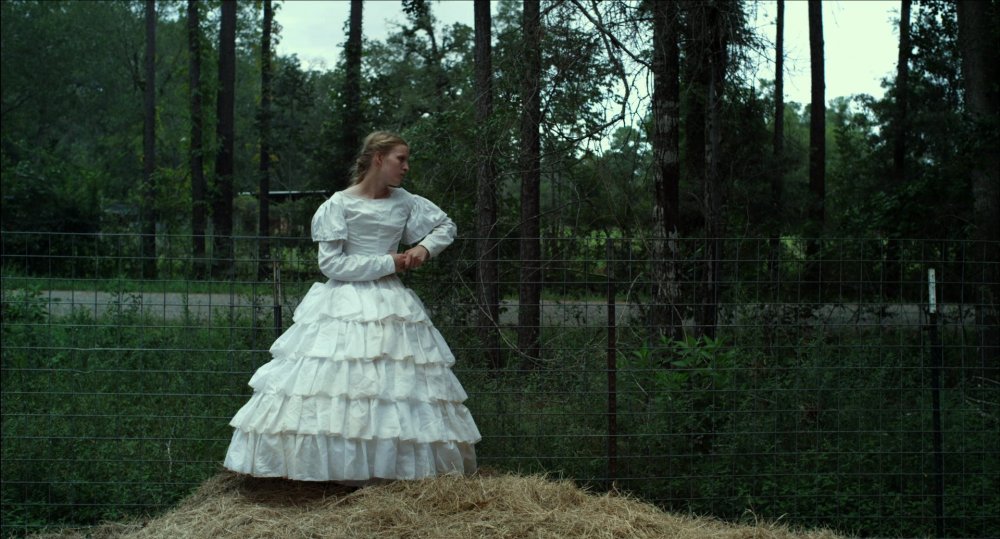
Stop the Pounding Heart (2013)
10. Stop the Pounding Heart
Roberto Minervini, Italy/USA
Italian filmmaker Minervini came to a rural-Texas dairy farm and cast young Sara Carlson and her devoutly religious family as versions of themselves, gave them some loosely-framed narrative scenes to work with and then proceeded to make something that feels like a Direct Cinema classic. Real and staged elements have never been more naturally compressed into a quietly powerful piece of cinema.
At times, the images Minervini creates come straight from the European-as-alien field guide, but anything remotely heavy-handed is balanced by the filmmaker’s overall delicacy and masterful use of time. Carlson, meanwhile, is a stunning revelation, able to conjure turns of naivety, awareness, inner tumult and resilience in a performance that thoroughly transcends supposed divisions between the crafted and the authentic self.
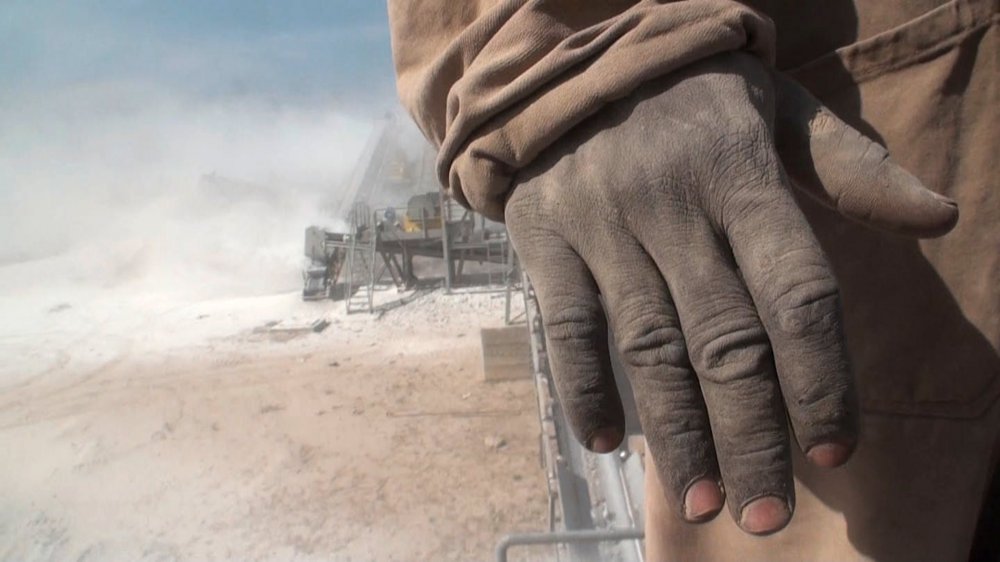
We Come as Friends (2014)
9. We Come as Friends
Hubert Sauper, Austria/France
Speaking of Europeans-as-aliens, Sauper takes this oft-used metaphor for the imperialist impulse and explores it to its full potential in his kaleidoscopic, revelatory plane trip movie to the Sudan, the Austrian’s highly anticipated follow-up to his legendary Darwin’s Nightmare. This is dense, inimitable, decentralised first-person impressionism that portrays Sudan as a place where a kind of warm war has erupted between China and America over oil and ideas, which conjures ghosts of old-school British and French colonialism.
Sauper’s walk-into-a-room-shooting style catches some tantalisingly revealing moments (one American man saying “The only cultural things we’re trying to change is what’s against the Bible”). But the filmmaker is unafraid to stage when a larger metaphorical point must be made, such as when we see a group of Chinese workers compare working in Africa to colonising other planets, as Sauper shows them scenes from Star Wars, Star Trek and 2001: A Space Odyssey. This is a film that reveals the dangled carrot of ‘peace’ to be a way for modern superpowers to divide and rule Africa, and in which the act of putting a clean white sock on a naked African boy takes on profound complexity.
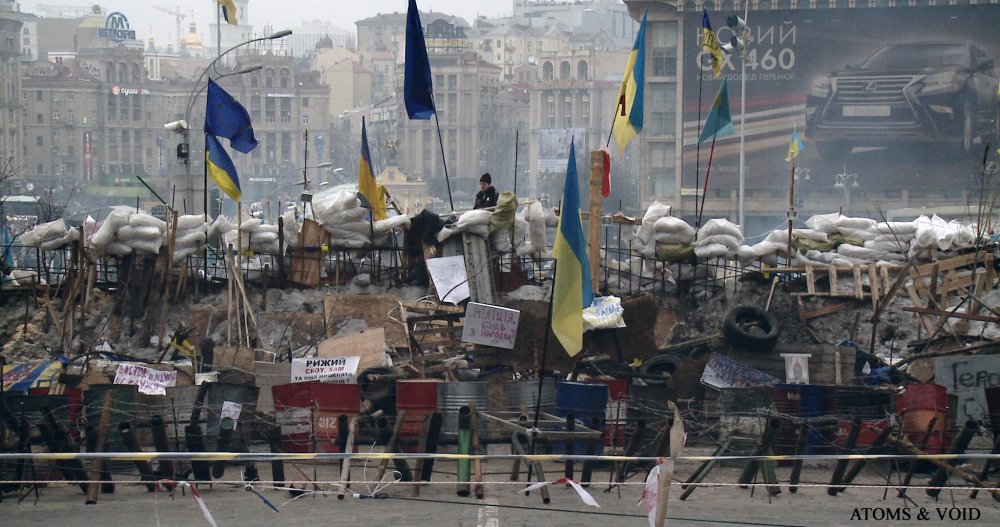
Maidan (2014)
8. Maidan
Sergei Loznitsa, Netherlands/Poland
Loznitsa’s film is a glacial opera, which tells the story of Kiev’s Maidan Square, its occupation by pro-West demonstrators and the subsequent violent crackdowns by Ukrainian government forces that shook the world in late 2013 and early 2014.
In highly composed, mostly locked-down shots of sometimes extreme duration, the dramatic situation unfolds in epic widescreen format. Each new image arrives with layers of contradiction and hyper-real clarity and the viewer is given time to process the heart-stopping tension and building tragedy.
This is monumental filmmaking – part document, part cinematic Guernica that takes a historical moment and shows the great ambiguities of political upheaval and the fundamental tensions between idealism and reality at the heart of all movements.

Tales of the Grim Sleeper (2014)
7. Tales of the Grim Sleeper
Nick Broomfield, UK/USA
An unfolding piece of messy and electrifying muckraker cinema, legendary director Broomfield’s Tales of the Grim Sleeper is his best work in years. The filmmaker’s signature style remains intact, with Broomfield lurking from place to place, his boom mic in hand and trademark smirk across his face. But the characters he meets, the anger and horror that forces the story forward and the way in which it all dizzyingly unfolds is skimpy documentary storytelling at its finest.
The central question is how could over 100 murders happen basically without anyone batting an eye? The answer is that, to the Los Angeles Police Department and much of the world, black people who live on the streets are essentially invisible.
Broomfield’s presence is crucial to get to this dark understanding because his stone-faced, outsider act gets people talking. The logic of the streets is the true subject of the film and when Broomfield’s cacophonous muckraking yields complexity and emotional pathos, like it does here, he’s a favourite. This is a movie for the moment, showing the severely, criminally dysfunctional relationship between cops and people.
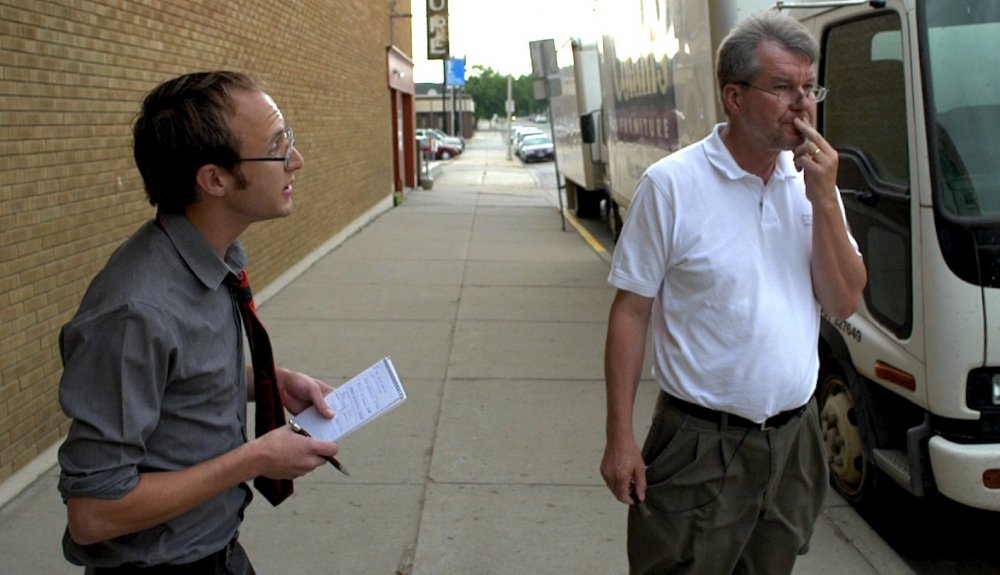
The Overnighters (2014)
6. The Overnighters
Jesse Moss, USA
Moss went to North Dakota to make a film about migrant workers and ended up finding something entirely unexpected in pastor Jay Reinke, one of the most complex and mesmeric documentary subjects ever filmed. The Overnighters in many ways is a record of a filmmaker trying to make sense of what he captured; a powerful, emotionally involving and thoroughly stunning embodiment of the notion that nonfiction filmmaking is something akin to lion taming. No film I’ve ever seen illustrates better the idea that nonfiction is a constant, tricky battle between form and chaos and the way Moss makes the dance work is masterful.
Meanwhile the film’s heart is unassailable – human creatures are prickly, odd things and the best films make us aware that if we want to live in a just society, we have to know our brothers and ourselves a lot better. Moss doesn’t just make the case for better understanding on a story level, he manifests it on a formal one.
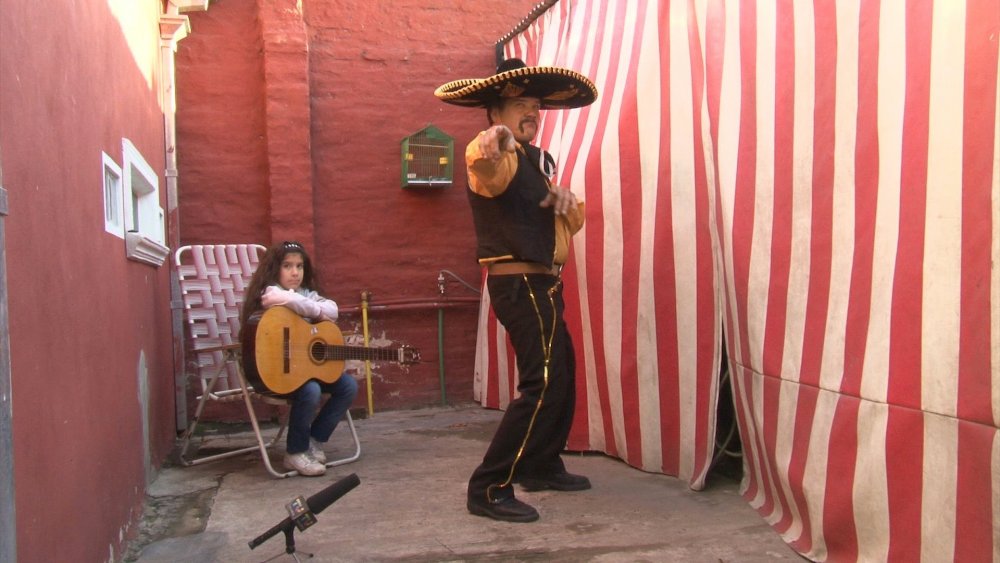
Living Stars (2014)
5. Living Stars
Gastón Duprat and Mariano Cohn, Argentina
Living Stars is entirely composed of wide shots of Argentineans dancing to pop songs, one set up after another, which plays like a glorious update of Warhol’s screen tests crossed with the infectious subgenre of internet dance-offs. Premiering at Sundance to little fanfare, the film gained more followers on the circuit after it screened at Hot Docs and elsewhere, ultimately becoming a kind of instant cult classic.
This is minimalist ethnography, at once impossibly jubilant and rigorously studied, that plays like a vibrant teenage cousin to Sensory Ethnography Lab products Leviathan and Manakamana. Watch for the over-sexed dancer killing it while her son and husband (or is it her father?) watch TV, seemingly unmoved. Watch for the little girl who picks up the toddler or the mom who moves the fan to give her son the proper wind effect for his routine.
Subtly touching, the film crosses classes, ages and genders to deliver a luminous portrait of a culture that likes to get down, no matter their social condition. No nonfiction film in recent memory has been so simultaneously fun and observant.
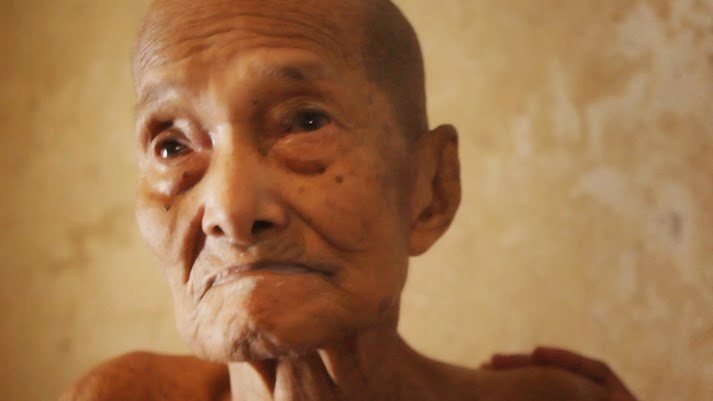
The Look of Silence (2014)
4. The Look of Silence
Joshua Oppenheimer, Denmark/Finland/UK/Indonesia/Norway
Oppenheimer’s follow up/partner film to The Act of Killing furthers the director’s radical exploration of performance and intervention in nonfiction but does so without much of the prior film’s flashy bravura. The result is a quieter experience, appropriate for a film that asks us to observe and try to understand what the deafening silence of a culture trapped in a nightmare of impunity sounds like.
Oppenheimer has emerged as our strongest voice for the expansion of documentary form and one of our great working political artists. The Look of Silence is devastating on many levels, but most exciting in how it confidently uses form to expand our perception. Lesser filmmakers think stories like the slow-burning fallout from the Indonesian genocide are ‘too important’ to be mucked up by art, but Oppenheimer knows his methods of staging and framing bring us to a much higher emotional understanding of the real.
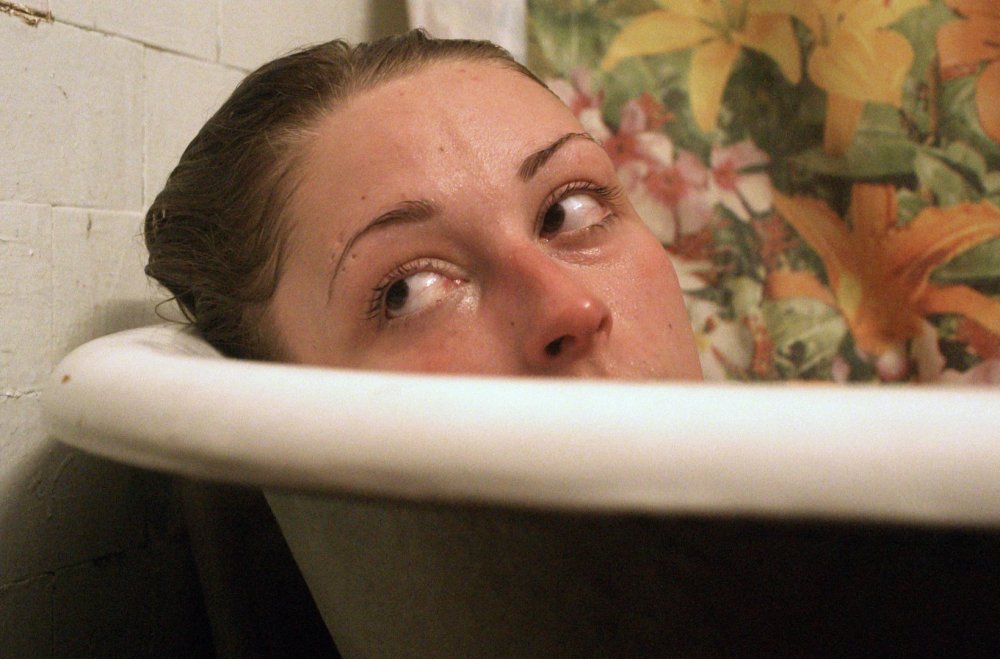
Heaven Knows What (2014)
3. Heaven Knows What
Josh Safdie and Benny Safdie, USA
Evoking heterodoxical classics from Shirley Clarke’s The Connection to Martin Bell’s Streetwise, Josh and Benny Safdie’s street melodrama took life when the former met star Arielle Holmes in the subways of New York and she eventually began providing incredible stories of her previous life on the streets. She wrote these dramatic tales down, the brothers brought on Sean Price Williams (my own frequent collaborator and friend), casted Holmes as a version of herself and created a fictional universe parallel and intersecting our own world, with actual junkies playing roles next to teen heartthrobs (an unrecognisable and utterly brilliant Caleb Landry Jones).
The result is a film that buzzes with an authentic, expressive, dirty energy all its own, like a hyper-real actuality. As in a few other great boundary-blurrers of 2014 such as Tim Sutton’s Memphis and Keith Miller’s Five Star, the relationship between observation and opera informs both modes and leads somewhere where only cinema can go. Heaven Knows What is astounding, electrifying stuff.

National Gallery (2014)
2. National Gallery
Frederick Wiseman, USA
It’s hard to be a devout worshiper of an artist like my hero Frederick Wiseman. I have seen nearly 30 of his films, so the rhythms of his edits and the way his scenes are constructed (which have remained stunningly, almost obsessively consistent over his nearing 50-year career) can seem almost second nature, to the point that it becomes difficult to actually experience the films he makes. But then he does something like the last few minutes of his masterful National Gallery and I completely lose my mind.
Wiseman has never attempted such a narratively expressive ending before, which is perfectly appropriate considering the preceding three hours are all about the way humans have attempted to express themselves since the Renaissance. Great art is a continually replenishing mystery novel. This is a film about looking at and making images, where the paintings themselves and the people who stare at them or discuss them or restore them are treated as equally compelling characters. It’s also one of the great Wiseman films ever, which means one of the great movies, period.
Read Michael Atkinson’s review
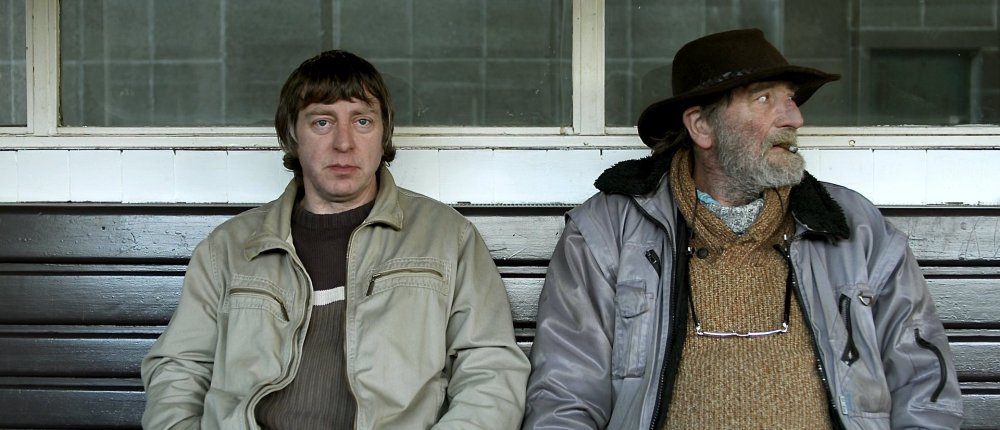
Ne me quitte pas (2014)
1. Ne me quitte pas
Sabine Lubbe Bakker and Niels van Koeverden, Netherlands/Belgium
Ne me quitte pas is a miserabilist buddy comedy about Marcel and Bob, two Belgian farmers who drink, bicker, giggle and periodically plan their double suicide.
Marcel is freshly divorced and spiralling, struggling to save face and keep structure for his children after his wife dashes away in a scene that begins the film. He is droopy-eyed, puppy-dog sympathetic, which only heightens the discomfort we feel as he occasionally drinks himself into dizzy oblivion and falls down. Bob is stoic, (seemingly) wise and quietly depressed, always at least half-drunk and there to support and/or make fun of his good buddy, perhaps a little bemused by the proceedings (including the two first-time filmmakers shooting it all).
The onscreen chemistry between these two men is amazing. The framing that Bakker and von Koevorden give their observational story allows for a range of emotional responses, from critical distance to unfiltered love. This is nonfiction filmmaking at its most poetic, measured, skilled, precarious and profound. The first time I saw the film, I cried through multiple scenes, astonished at the chances taken, the execution and the way these filmmakers were able to depict lives so meaningfully.
The film feels quietly and confidently directed, with its smartly composed images and masterful crafting of performance. It pushes into the realm of documentary’s dirty, inescapable E-word (exploitation), but there’s a tranquil sense of collaboration between subjects and filmmakers that make even the most dangerous scenes feel somehow invited and inviting. It’s an expressive, down-to-earth, absurdist, sad, silly, slow burn of a movie about men and all our dumb-headed masculine glory, and it’s my number one pick for the best in cinematic nonfiction for 2014.
15 special mentions (in alphabetical order)
Double Play
E-Team
Evolution of a Criminal
Fishtail
The Great Invisible
Guidelines
Happy Valley
Iron Ministry
Killing Time
Life Itself
Mistaken for Strangers
Point and Shoot
Sacro GRA
Spartans
Tour of Duty
-
The Digital Edition and Archive quick link
Log in here to your digital edition and archive subscription, take a look at the packages on offer and buy a subscription.





